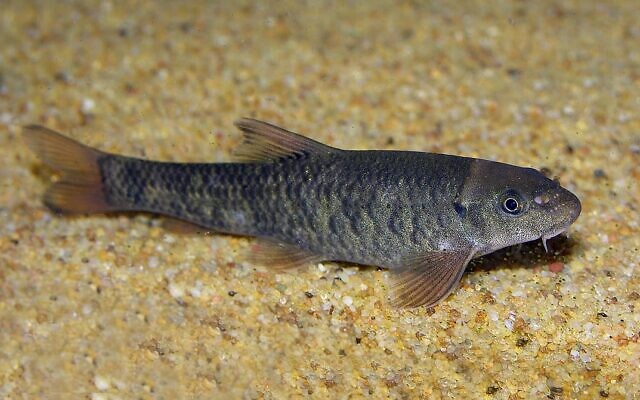Israeli scientists have discovered that a species of “nibbling fish” in the Sea of Galilee has long been misidentified as another very similar lake dweller.
Genetic profiling has revealed that the small fish in the Middle East’s biggest freshwater lake are not, as long assumed, Doctor fish (Red garra, or Garra rufa), which are found mainly in Turkey, Syria, Iraq and Iran, but rather the endangered Garra jordanica.
Doctor fish got their name because of their popularity in fish pedicures. They nibble old skin off people’s feet in special foot pools offered by spas, although in many countries the practice has been banned as unsanitary.
The spa trade gets its fish supplies mainly from commercial facilities in Israel and to a lesser extent Turkey, where the species has been overfished in the wild.
The Garra rufa looks just like the Garra jordanica. And it nibbles too.
Get The Times of Israel's Daily Edition by email and never miss our top stories
It is endemic to the northern Dead Sea basin, including the Sea of Galilee and the Jordan River, and to bodies of water such as the Keziv River in the Western Galilee of northern Israel.

The Sea of Galilee, which has traditionally flowed into the Jordan River from its southern end. (Ela Faust, CC BY 2.5, PikiWiki Israel, Wikimedia Commons)
Part of the Cyprinidae (carp) family of freshwater fish, the garras have adapted to eating detritus, algae and tiny animals (arthropods and zooplankton).
Correcting the misidentification of the species in the Sea of Galilee came about within the context of work to create genetic profiles of fish in the lake to better monitor and protect them.
The research, led by Roni Tadmor-Levi and Lior David of Jerusalem’s Hebrew University, is using DNA barcoding, a system for identifying a species using a short section of DNA from a specific gene or genes (in this case, the MT-CO1 gene sequence).
According to an article published in the peer-reviewed PLOS One journal, the Sea of Galilee, an isolated habitat (its only outlet is to the River Jordan, which drains into the Dead Sea), is home to unique fish populations, including species that are only found in the lake and populations on the edge of their distribution range.
Conservation, it says, is critical, especially in light of pressures from water pumping, fishing and recreation. The state regards the Sea of Galilee as the country’s emergency water store.
To set a baseline for future comparisons, the research team studied DNA barcodes for 22 species and sent them to the Barcode of Life Database at the Center for Biodiversity Genomics in Canada. Of the 22, 12 barcodes for 10 species were new to the database.

A Doctor Fish, or red garra. (Dances, CC BY-SA 3.0, Wikimedia Commons)
For five species, including the garra, there was a conflict between identification by physical form and DNA makeup.
According to the article, the study “sets the basis for further using molecular tools for monitoring fish populations, understanding their ecology, and effectively managing their conservation in this unique and important habitat and in the region.”
PLOS One is a peer-reviewed open access scientific journal published by the Public Library of Science.
Also involved in the research were the late Tomer Borovski, who collected much of the material, Evgeniya Marcos-Hadad, James Shapiro, Gideon Hulata, Daniel Golani and Lior David.


